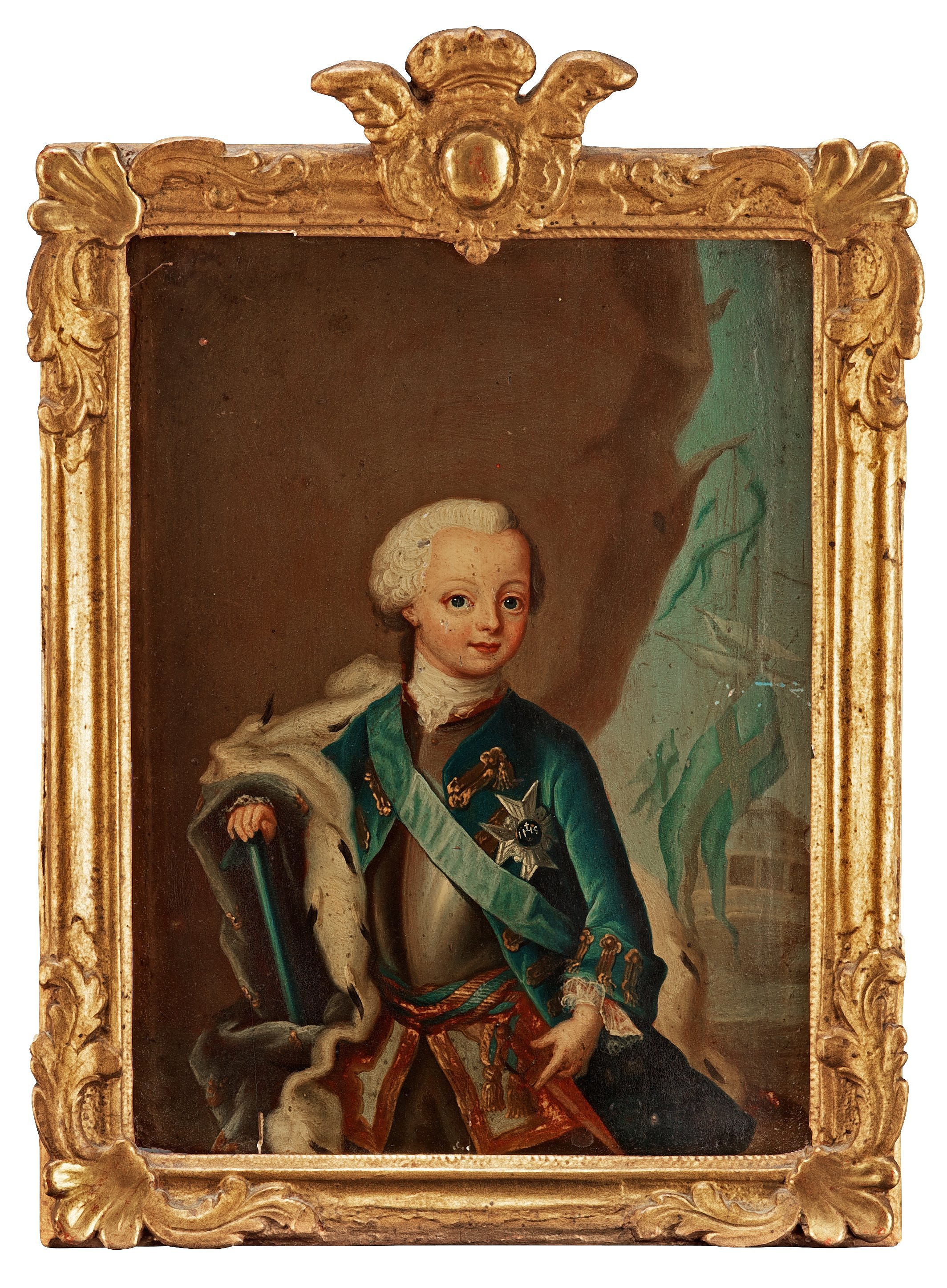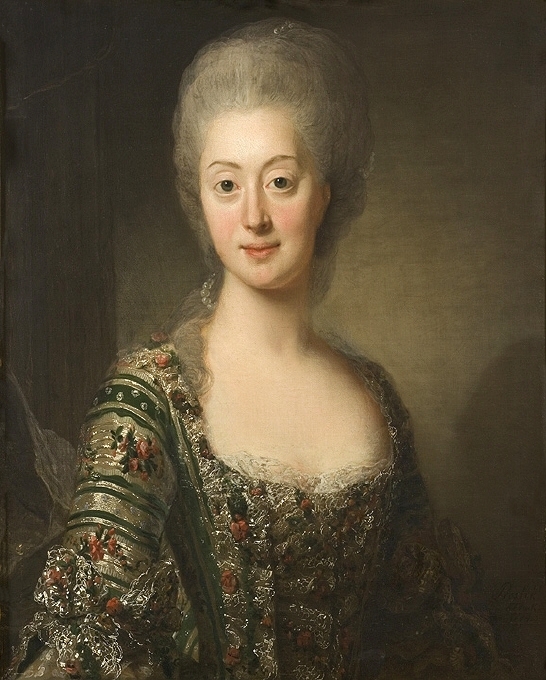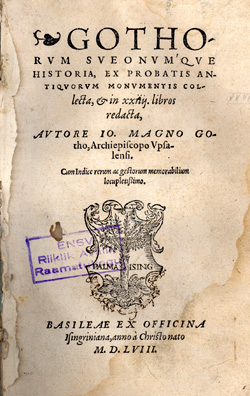|
Carl XIII
Charles XIII or Carl XIII (; 7 October 1748 – 5 February 1818) was King of Sweden from 1809 and King of Norway from 1814 to his death. He was the second son (and younger brother to King Gustav III) of King Adolf Frederick of Sweden and Louisa Ulrika of Prussia, sister of Frederick the Great. Though known as King Charles XIII in Sweden, he was actually the seventh Swedish king by that name, as Charles IX (reigned 1604–1611) had adopted his numeral after studying a fictitious history of Sweden. In Norway, he is known as Charles II. Early life Prince Charles was placed under the tutelage of Hedvig Elisabet Strömfelt and then Ulrica Schönström. He was appointed grand admiral when he was but few days old. He was described as a good dancer at the amateur theatre of the royal court. Reportedly he was not very close to his mother. The Queen preferred her youngest children, Sophie Albertine and Frederick Adolf.Alma Söderhjelm (1945). ''Gustav III:s syskon'' (The siblings ... [...More Info...] [...Related Items...] OR: [Wikipedia] [Google] [Baidu] |
Order Of Charles XIII
The Royal Order of Charles XIII () is a Swedish order (honour), order of merit, founded by King Charles XIII of Sweden, Charles XIII in 1811. Membership The Lord and Master of the Order is the Monarch, King of Sweden, currently King Carl XVI Gustaf. Membership of the order can only be conferred on Freemasonry, Freemasons of the Protestantism, Protestant faith. The membership of the order comprises: *Thirty lay members and never more than seven non-Swedish members, each holding the XI (highest) degree of the Swedish Rite of Freemasonry, i.e. either regional heads or national heads. *Three clerical members, invariably priests or bishops of the Church of Sweden. *All princes of the Royal House of Sweden are members from birth, but do not wear the insignia unless they are Swedish Rite#Degrees, Knight and Commander of the Red Cross of the Freemasonry in Sweden#Swedish Order of Freemasons, Swedish Order of Freemasons. (Hence the insignia is not worn by Carl XVI Gustaf of Sweden, the Ki ... [...More Info...] [...Related Items...] OR: [Wikipedia] [Google] [Baidu] |
Gustav III
Gustav III (29 March 1792), also called ''Gustavus III'', was King of Sweden from 1771 until his assassination in 1792. He was the eldest son of King Adolf Frederick and Queen Louisa Ulrika of Sweden. Gustav was a vocal opponent of what he saw as the abuse of political privileges seized by the Swedish nobility, nobility since the death of King Charles XII of Sweden, Charles XII in the Great Northern War. Seizing power from the government in a coup d'état, called the Revolution of 1772, Swedish Revolution, in 1772, that ended the Age of Liberty, he initiated a campaign to restore a measure of royal autocracy. This was completed by the Union and Security Act of 1789, which swept away most of the powers exercised by the Swedish Riksdag of the Estates, Riksdag of the estates during the Age of Liberty, but at the same time it opened up the government for all citizens, thereby breaking the privileges of the nobility. A believer in enlightened absolutism, Gustav spent considerable pu ... [...More Info...] [...Related Items...] OR: [Wikipedia] [Google] [Baidu] |
Caps (party)
The Caps () were a political faction during the Age of Liberty (1719–1772) in Sweden. The primary rivals of the Caps were known as the Hats. The Hats are actually responsible for the Caps' name, as it comes from a contraction of Night-cap, a name used to suggest that the Caps were the soft and timid party. The Caps represented mostly peasants and clergymen. Policy The foremost representative of the Age of Liberty, ''de facto'' leader of government and of the Caps from 1719 to 1738 was the Chancery President, Count Arvid Horn. Horn reversed the traditional policy of Sweden by keeping the Kingdom of France at a distance and drawing near to Russia. Thus a twenty years' war was succeeded by a twenty years' peace, during which the nation recovered so rapidly from its wounds that it began to forget them. The Riksdag of 1738 was to mark a turning-point in Swedish history, the Hats carried everything before them, and the aged Horn was finally compelled to retire from a scene where, ... [...More Info...] [...Related Items...] OR: [Wikipedia] [Google] [Baidu] |
Prince Frederick Adolf Of Sweden
A prince is a male ruler (ranked below a king, grand prince, and grand duke) or a male member of a monarch's or former monarch's family. ''Prince'' is also a title of nobility (often highest), often hereditary, in some European states. The female equivalent is a princess. The English word derives, via the French word ''prince'', from the Latin noun , from (first) and (head), meaning "the first, foremost, the chief, most distinguished, noble ruler, prince". In a related sense, now not commonly used, all more or less sovereign rulers over a state, including kings, were "princes" in the language of international politics. They normally had another title, for example king or duke. Many of these were Princes of the Holy Roman Empire. Historical background The Latin word (older Latin *prīsmo-kaps, ), became the usual title of the informal leader of the Roman senate some centuries before the transition to empire, the '' princeps senatus''. Emperor Augustus established the fo ... [...More Info...] [...Related Items...] OR: [Wikipedia] [Google] [Baidu] |
Princess Sophia Albertine Of Sweden
Princess is a title used by a female member of a regnant monarch's family or by a female ruler of a principality. The male equivalent is a prince (from Latin ''princeps'', meaning principal citizen). Most often, the term has been used for the consort of a prince, or for the daughter of a monarch. A crown princess can be the heir apparent to the throne or the spouse of the heir apparent. Princess as a substantive title Some princesses are reigning monarchs of principalities. There have been fewer instances of reigning princesses than reigning princes, as most principalities excluded women from inheriting the throne. An example of a princess regnant is Constance of Antioch, princess regnant of Antioch in the 12th century. Since the president of France, an office for which women are eligible, is ''ex-officio'' a co-prince of Andorra, then Andorra could theoretically be jointly ruled by a princess. Princess as a courtesy title Descendants of monarchs For many centuries, the t ... [...More Info...] [...Related Items...] OR: [Wikipedia] [Google] [Baidu] |
Amateur Theatre
Amateur theatre, also known as amateur dramatics, is theatre performed by amateur actors and singers. Amateur theatre groups may stage plays, revues, musicals, light opera, pantomime or variety shows, and do so for the social activity as well as for aesthetic values. Productions may take place in venues ranging from the open air, community centres, or schools to independent or major professional theatres. Amateur theatre is distinct from the professional or community theatre because performers are usually not paid. Amateur actors are not typically members of actors' unions. Definition Opinions vary on how to define "amateur" in relation to theatre. Technically speaking, an "amateur" is anyone who does not accept, or is not offered, money for their services. One interpretation of this is: "One lacking the skill of a professional, as in an art". Another is: "A person who engages in an art, science, study, or athletic activity as a pastime rather than as a profession". An amateur a ... [...More Info...] [...Related Items...] OR: [Wikipedia] [Google] [Baidu] |
Swedish Navy
The Swedish Navy () is the maritime service branch of the Swedish Armed Forces. It is composed of surface and submarine naval units – the Fleet (), formally sometimes referred to as the Royal Navy () – as well as marine units, the Amphibious Corps (). Founded under King Gustav Vasa in 1522, the Swedish navy is one of the oldest continuously serving navies in the world, celebrating its 500th anniversary in 2022. History Early Swedish kings ( 9th–14th centuries) organised a Swedish Navy along the coastline through . This involved combined rowing and sailing ships (without artillery). This system became obsolete with the development of society and changes in military technology. No later than in the 14th century, the duty to serve in was replaced by a tax. In 1427, when Sweden was part of the Kalmar Union (with Denmark and Norway), Swedish warships did however participate in the naval battle of Öresund against the Hanseatic League. It is unclear how this force was ... [...More Info...] [...Related Items...] OR: [Wikipedia] [Google] [Baidu] |
Ulrica Schönström
Ulrica Schönström, née ''Adlersten'' (1694–1757) was a Swedish baroness and courtier. She was the royal governess of the children of Adolf Frederick, King of Sweden and Louisa Ulrika of Prussia. She was born to baron Göran Adlersten and Maria Ehrenberg and married in 1715 to Albrekt Schönström (d. 1740). In 1751, she was appointed royal governess to the royal children in succession to Hedvig Elisabet Strömfelt. She was appreciated by the queen who regarded her as dutiful and thoughtful: "she has excellent qualities and are very devoted to my children".Nanna Lundh-Eriksson: ''Sophia Albertina. Historisk Kavalkad.'' Stockholm (1946) After her tenure as governess, she continued in service as ''hovmästarinna Court Mistress (; ; ; ; ) or Chief Court Mistress (; ; ; ; ; ) is or was the title of the senior lady-in-waiting in the courts of Austria, Denmark, Norway, the Netherlands, Sweden, Imperial Russia, and the German princely and royal courts. Chief c ...'' or senior la ... [...More Info...] [...Related Items...] OR: [Wikipedia] [Google] [Baidu] |
Hedvig Elisabet Strömfelt
Hedvig Elisabet Strömfelt (née Wrangel; 1687 — 8 March 1751) was a Swedish courtier. She served as överhovmästarinna to two queens of Sweden, Ulrika Eleonora of Sweden and Louisa Ulrika of Prussia, and as Royal Governess to the royal children. Gustav III of Sweden refers to her with affection and admiration in his writings. Life Hedvig Elisabet Strömfelt was the daughter of colonel nobleman Jurgen Johan Wrangel and Margareta Stenbock and married to riksråd count Johan Carl Strömfelt (1678–1736). She became the mother of three children, among them Ulrika Strömfelt. After having been widowed, Strömfelt was appointed '' överhovmästarinna'' (Mistress of the Robes) to Ulrika Eleonora of Sweden in 1736 in succession to Katarina Ebba Horn af Åminne, making her the senior of all the female courtiers, and served until the queen's death in 1741. As such, she was the first in rank of all the female office holders of the royal household with responsibility of the ladies-in ... [...More Info...] [...Related Items...] OR: [Wikipedia] [Google] [Baidu] |
Ulrica Pasch - Duke Charles XIII Of Sweden 1758
Ulrica, also spelled Ulrika, is a female given name of Germanic origins. Its male equivalent is Ulric, Ulrich or Ulrik. Ulrike and Ulrikke are alternative names derived from Ulrica. A German diminutive thereof is Ullie, Swedish Ulla. Ulrica may refer to: People * Ulrika Eleonora, Queen of Sweden (1688–1741) * Ulrica Elisabeth von Liewen (1747–1775), rumored parent (along with King Adolf Frederick of Sweden) of Lolotte Forssberg * Ulrika Åberg (1771–1852), Swedish ballerina * Ulrica Arfvidsson (1734–1801), Swedish fortune teller * Ulrika Björn (born 1973), Swedish footballer * Ulrika Ericsson, ''Playboy'' Playmate of the Month for November 1996 * Ulrika von Fersen (1749–1810), Swedish socialite, a known figure of the Gustavian age, the inspiration of a poem * Ulrika Jonsson (born 1967), Swedish personality on British television * Ulrika Knape (born 1955), Swedish diver * Ulrika Melin (1767–1834), Swedish artist * Ulrika Pasch (1735–1796), Swedish ... [...More Info...] [...Related Items...] OR: [Wikipedia] [Google] [Baidu] |
Nordisk Familjebok
(, 'Nordic Family Book') is a Swedish language, Swedish encyclopedia that was published in print from between 1876 and 1993, and that is now fully available in digital form via Project Runeberg at Linköping University. The public domain editions of the encyclopedia remain important reference works in Finland, especially on Finnish Wikipedia. History First edition began when Halmstad publisher hired an editor, linguist , in 1874 to publish a six-volume encyclopedia. Linder drew up a plan for the work, designed the editorial team and created a large circle of experts and literary figures, who submitted article proposals and wrote and reviewed them. Under Linder's direction, the articles were then edited to make them as formal, consistent and accurate as possible. Much attention was paid to Nordic subjects, mainly Swedish and Finnish, where sources and models were often lacking, so extensive and time-consuming pioneering work had to be done. As a result, the earlier plan f ... [...More Info...] [...Related Items...] OR: [Wikipedia] [Google] [Baidu] |
Historia De Omnibus Gothorum Sueonumque Regibus
The ''Historia de omnibus Gothorum Sueonumque regibus'' (''History of all the kings of the Geats and the Swedes'') is a posthumously published, partly pseudo-historical work by Johannes Magnus, Sweden's last Catholic archbishop. In 1554 (ten years after his death), it was published in Latin by his brother Olaus Magnus. The ''Historia'' was implicitly critical of King Gustav Vasa, who had introduced the Protestant Reformation in 1527 and caused the exile of Johannes Magnus. It was nevertheless used widely by Gustav Vasa's sons and successors, to whom it had been dedicated, since it extolled the glorious past of the Swedish kingdom. In particular, the sons used the (fictitious) king-list which began with Magog, grandson of Noah. As a consequence, Eric XIV and Charles IX adopted much higher regnal numbers than warranted by the historical sources. A Swedish translation was published by Ericus Benedicti Schroderus in 1620. A modern Swedish version, translated by Kurt Johannesson an ... [...More Info...] [...Related Items...] OR: [Wikipedia] [Google] [Baidu] |





